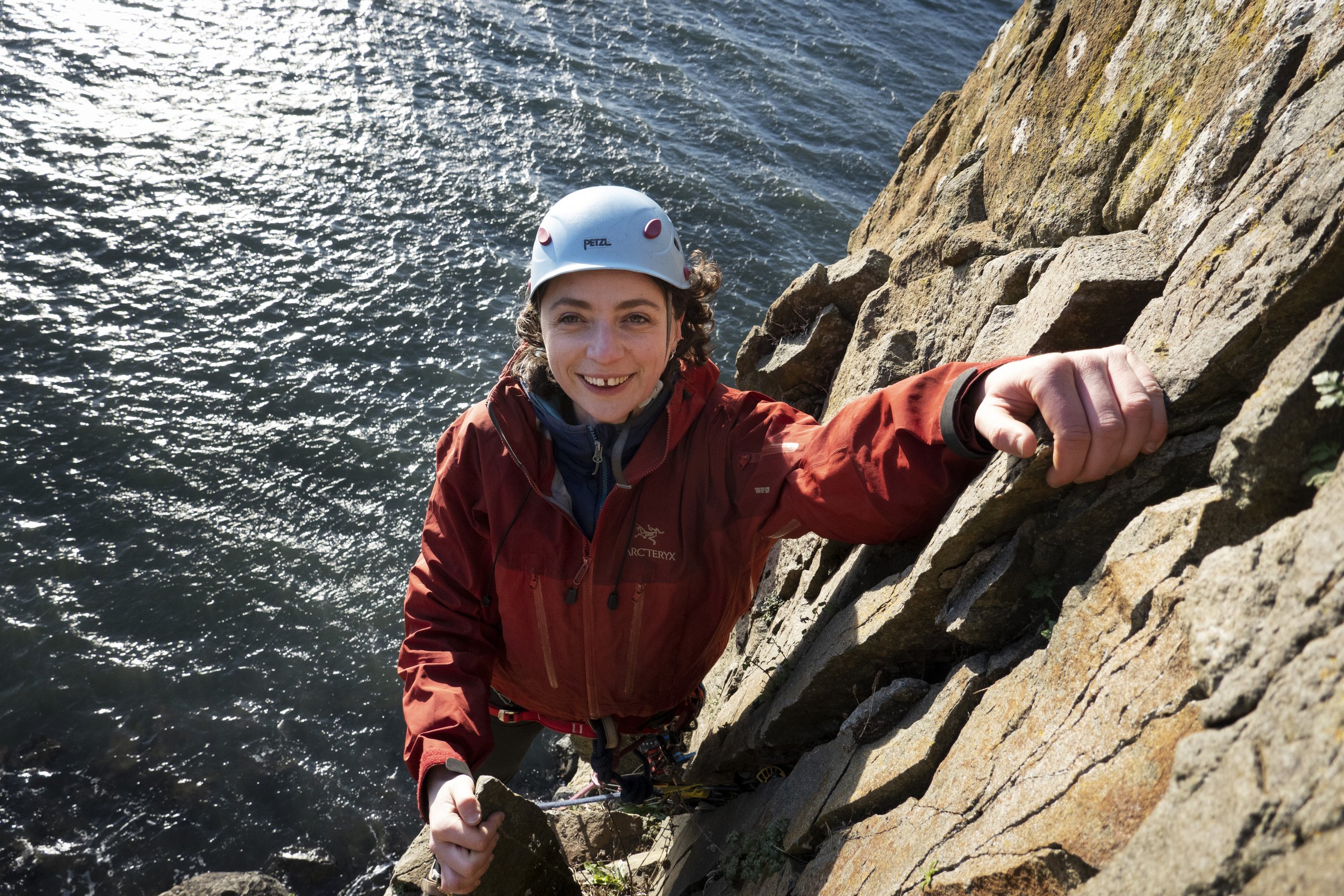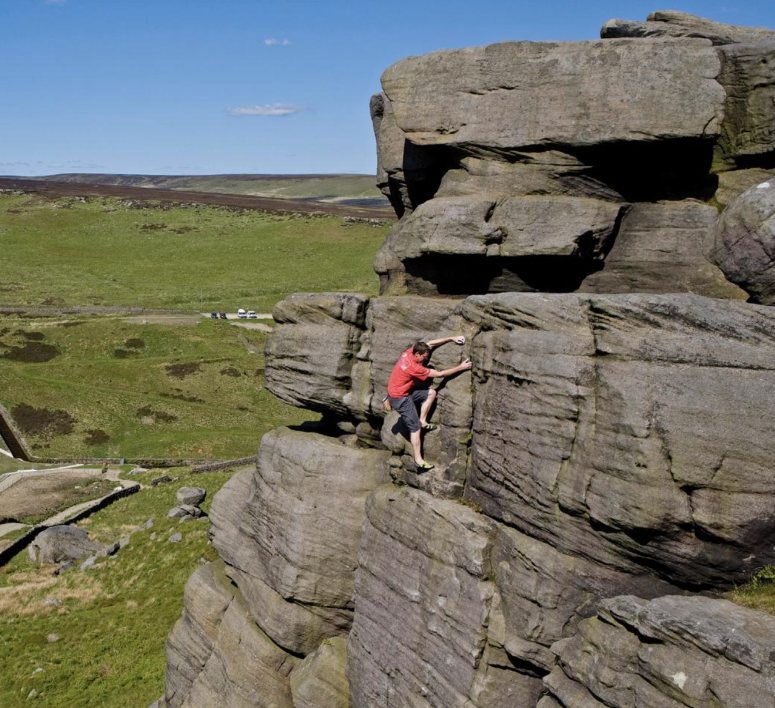Anna Fleming on the Experience of Rock Climbing
Listen to the podcast here, or wherever you get your podcasts.
Anna Fleming is the author of Time on Rock, a book about the experience of climbing rocks in England, Scotland, Wales, and the Greek island of Kalymnos. Through the story of her progress from terrified beginner to confident lead climber, she explores her subjective experience of the physical nature and history of formation of rocks such as granite, gritstone, rhyolite, slate, and limestone. Here she is climbing on the quartz dolerite Hawkcraig Crag at Aberdour in Fife, Scotland.
Courtesy of Murdo McLeod
Podcast Illustrations
Images courtesy of Anna Fleming unless otherwise noted.
Gritstone
The gritstone in Yorkshire, England, is a hard, coarse-grained siliceous sandstone formed during the Carboniferous period about 300 million years ago when northern England was near the Equator.
Courtesy of Matt O’Brien
The cross-bedding is visible in this crag of Yorkshire gritstone.
Courtesy of Mike Hutton
Slate
Disused slate quarry at Dinorwig, Wales. In the 19th and early 20th centuries, the slates of North Wales provided most of the roofing slate used in Britain. They were originally formed as deep-water marine mudstones during the Cambrian around 500 million years ago and were later uplifted, folded, and metamorphosed to form slates about 400 million years ago.
In the podcast, Anna Fleming describes her experience of the smooth texture of the slate. Slate splits easily into thin sheets because of the alignment of tiny mica crystals in the rock.
Slate whistles made by a former Dinorwig quarryman.
Courtesy of Branwen Davies
Gabbro
The Cuillin range on the Isle of Skye, Scotland, consists largely of gabbro, a coarse-grained rock that formed in magma chambers below volcanos that have now been eroded away. The rocks were intruded about 60 million years ago. The Cuillins are notorious among climbers as they present special challenges, as Anna Fleming describes in the podcast.
Granite
Granite tors on Bynak Mor in the Cairngorms, Scotland. After what is often a long walk to reach the summit, the granite tors in the Cairngorms present a sought-after challenge for climbers. Their coarse-grained texture provides good friction to the climber, though they often lack suitable hand or foot holds. The granites of the Cairngorms and Scottish Highlands were formed during the Silurian (440-419 million years ago) when the continent of Laurentia collided with Baltica to join Scotland to the area that would become England and Europe. The granites were originally formed at depth as magma chambers below volcanoes that have eroded away.
Anna Fleming climbing on granite slabs above Glen Etive. The granite has been smoothed by the action of glaciers.
Courtesy of Murdo McLeod
Sandstone
The Moray sandstone cliffs overlook the Moray Firth, a vast inlet that cuts into the east coast of northern Scotland. This sandstone was mostly formed by wind-blown dunes during the late Permian and early Triassic (about 250 million years ago). It preserves fossils of extinct reptiles, known as the Elgin Reptiles after the nearby town of Elgin.
Patterns sculpted into the Moray sandstone by weathering and fluids circulating within the rock.
Limestone
Limestone cliffs with a climber (red shirt in center) on the Greek island of Kalymnos.
Courtesy of Nick Weicht
Kalymnos lies near the coast of Turkey.
Lewisian Gneiss
Climbing on the Lewisian gneiss, a suite of Precambrian metamorphic rocks, on the western coast of the Isle of Lewis in Scotland.
Courtesy of Wil Treasure
Further Reading
Anna Fleming (2022), Time on Rock, Canongate
A small mountain of books that sustained Anna Fleming during the COVID lockdown.














